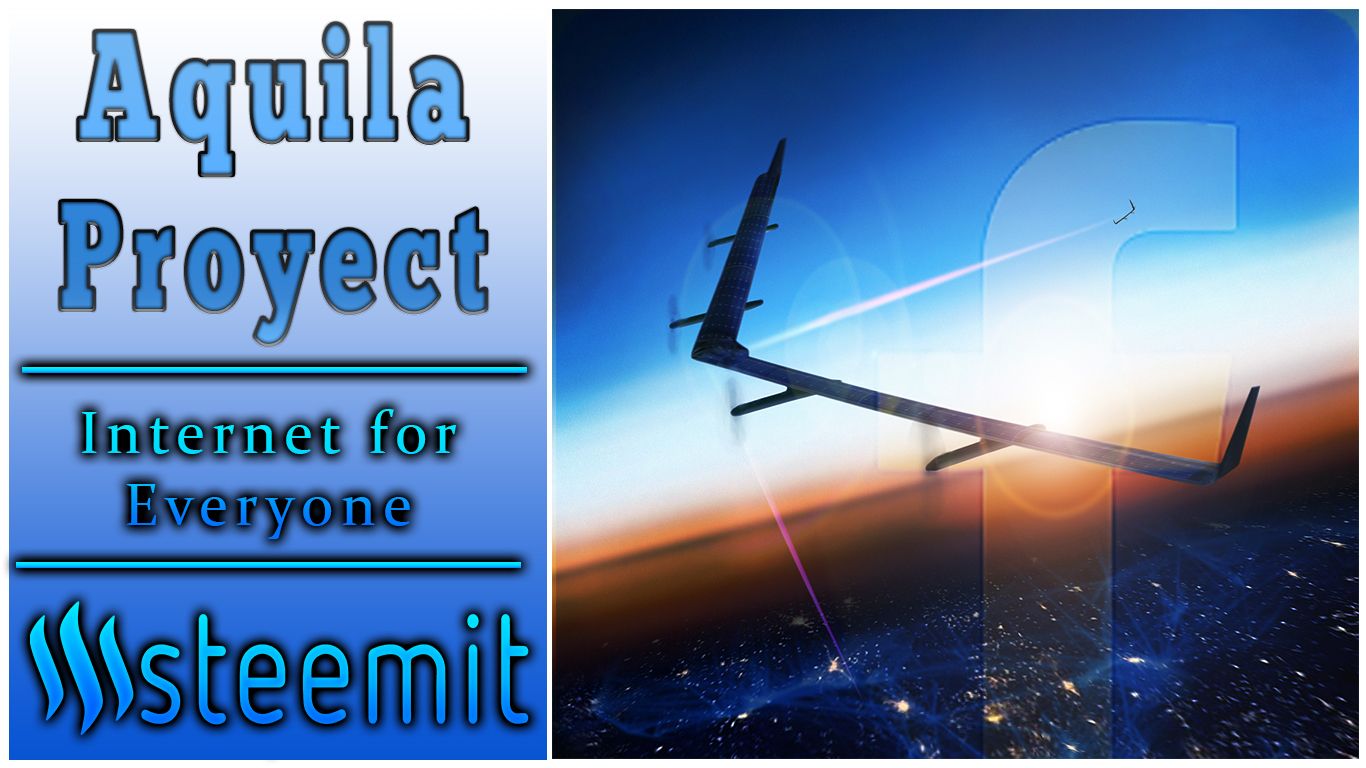

Although it seems incredible for the times, many parts of the planet do not have an internet service as usual. And consequently several companies of the sector around the world have had the initiative to obtain the means to solve this problem. Big companies like Google, Microsoft and Facebook have long been researching and developing technology, which beyond philanthropy seek to reach many more people in the world through the internet, thus increasing its portfolio of users and making better profits with it.
In this article we will talk about the project carried out by Facebook to expand the internet network in areas where it is very difficult to access through conventional methods. This project is called "Aquila" and aims to use a fleet of drones powered by solar energy, which will fly at high altitude in a geostationary way using a laser system to connect with satellites and ground communication equipment, in this way, Internet to 60% of the world population that does not have the service at this time.
The dron developed at research facilities run by Mark Zuckerberg has a wingspan comparable to a Boeing 767 but uses lightweight materials such as carbon fiber that make it lighter than a car. These weight specifications are an important requirement since the device will be in flight for 3 months using only solar energy, so saving energy in that sense is a critical issue.
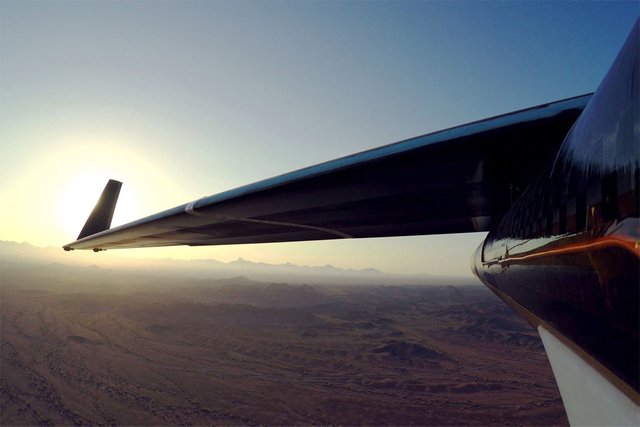
The dron will reach a height of 60,000 to 90,000 feet in the air while maintaining communication with several additional drones to increase coverage in wider regions. The plane will move at a relatively slow speed of 129 km / h for reasons of efficiency, and its cruising altitude will be about 18,000 meters.
“When Aquila is ready, it will be a fleet of solar-powered planes that will beam internet connectivity across the world. Today, more than half the world’s population — 4 billion people — still can’t access the internet. One day, Aquila will help change that.” -Mark Zuckerberg
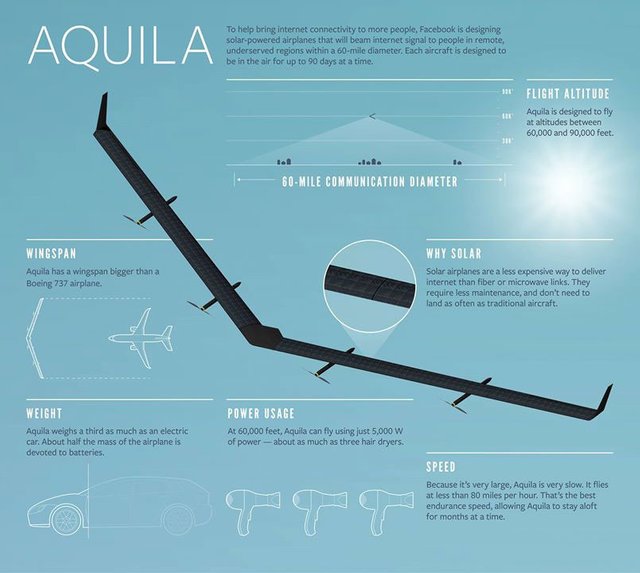
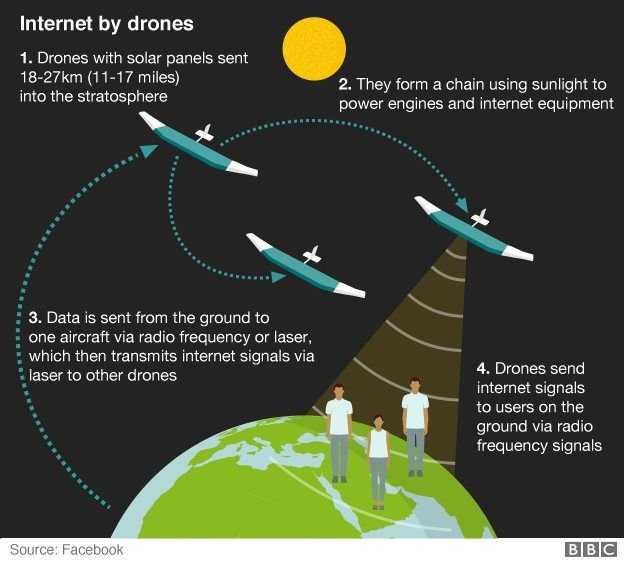
First Flight of the Aquila
In 2016 the first full-scale flight of the solar Dron Aquila was performed, after months of preliminary tests with a scale version 1/5 of the real size. The test took place at "Yuma Proving Ground", a military testing facility located in Arizona.
The social network reported that in its first flight the ship overflew the desert at a small height for more than 90 minutes, which allowed to evaluate and gather important data on flight efficiency, wind turbulence, aerodynamics, Control and training of personnel.
This first flight was a success and allowed the researchers to have a vision of future improvements and expectations about the scope of the project. Although there was evidence that in the first flight structural problems arose that resulted in the Dron's substantial damage in the first tests performed in the Arizona desert.
Second Flight of Aquila Test
The Aquila project furrowed the air in a second test carried out in late May, near Yuma, in the Arizona desert. This second test included several upgrades to the unmanned Drone, which features wing flaps, improvements in the exterior fuselage and the addition of a horizontal propeller in the aerodynamic mechanism, plus hundreds of sensors to record performance on Flight of the ship.
Aquila on this occasion was in flight about 1 hour and 46 minutes, flying over the desert and collecting data that the team used to increase its efficiency. After completing the tests the Drone landed without problems in a special post built by the development team.
With the success of these final tests, the Aquila project will eventually seek to put into operation a full fleet of drones to bring the internet to the most remote places on the planet. Connecting more than 4000 Million people who are currently "Offline".
Overcoming Challenges
The most important challenge to be overcome by engineers in charge of the project has to do mainly with the energy performance of the device, since in the preliminary tests have used only batteries that store the solar energy captured by the solar panels during the tests. And this is a critical issue as we said before, since there is a history of unmanned solar airplanes with autonomy of only 2 weeks, while "Aquila" intends to stay in flight for up to 90 days.
Because of this the engineers are working on the energy system so that it can sustain itself during missions of up to 3 months. They also seek to more accurately assess how much energy they need to operate during different altitudes and take-off, landing and flight temperatures, and how these energy demands will affect battery size, latitude range, solar panel performance and performance seasonal.
“We need to develop more efficient on-board power and communication systems; ensure the aircraft are resilient to structural damage to reduce maintenance costs and able to stay aloft for long periods of time to keep fleet numbers low; and minimize the amount of human supervision associated with their operation"--Andy Cox, mechanical engineer.
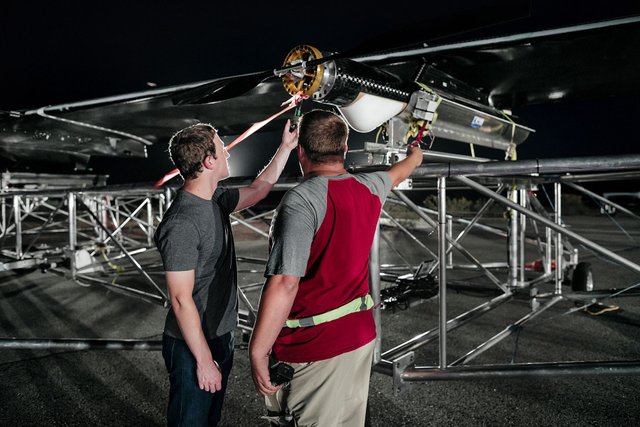
Beyond the altruistic pretensions of the Facebook team to bring the internet to many people around the world, it is not unreasonable to think that Zuckerberg seeks only benefits for his company and turn the internet into a monopoly of information that only they handle. Not to mention the possible controversy that will bring with respect to the privacy and handling of large amount of data from new users handled all from the offices of Facebook.
In such a case, this technological breakthrough is not the first concept of this type, companies like Google are also carrying out several projects to bring the internet globally and in an accessible way such as: * Project Loon * and * Project Titan * Which we will talk about in another post and that you can find on my Steemit Blog.
- http://larepublica.pe/tecnologia/822850-apec-2016-mark-zuckerberg-y-su-drone-aquila-que-llevara-internet-zonas-reconditas-del-pais
- https://www.xataka.com/otros/por-que-facebook-se-empena-en-llevar-internet-a-todo-el-mundo-y-quien-y-que-se-lo-impide
- https://www.xataka.com/drones/asi-fue-el-primer-vuelo-largo-de-aquila-el-dron-para-llevar-internet-de-facebook
- http://www.elmundo.es/tecnologia/2016/07/22/5791bcae468aebe8618b4598.html
- https://futurism.com/facebooks-drone-is-one-step-closer-to-beaming-internet-to-the-world/

buen post
Downvoting a post can decrease pending rewards and make it less visible. Common reasons:
Submit
Gracias
Downvoting a post can decrease pending rewards and make it less visible. Common reasons:
Submit
Great innovation and great share! thank you...
Although I would like to keep some place 'out of reach of internet' that is just for personal sanity reasons to 'cut off' from the civilization, other than my selfish pet peeve, this is a great project!!
Downvoting a post can decrease pending rewards and make it less visible. Common reasons:
Submit
This is very much interesting. It's one of the great projects. Thanks a lot for the information.
Downvoting a post can decrease pending rewards and make it less visible. Common reasons:
Submit
Very very amazing information I had no idea that was going on so interesting since I own a yuneec typhoon drone thanks for all that I love to learn new things!
Downvoting a post can decrease pending rewards and make it less visible. Common reasons:
Submit